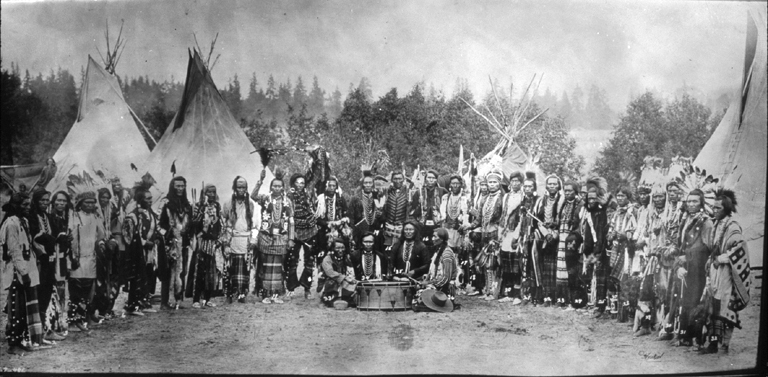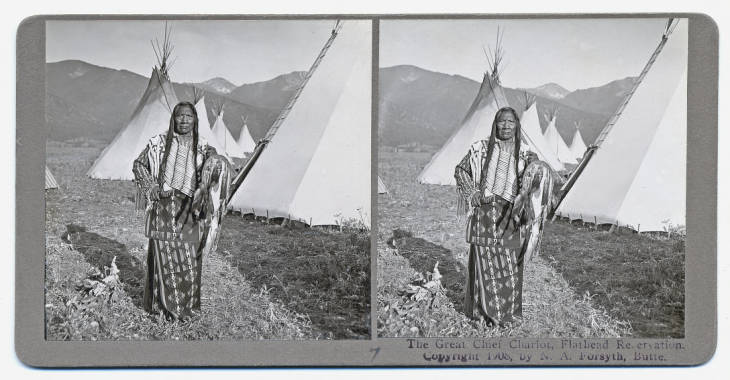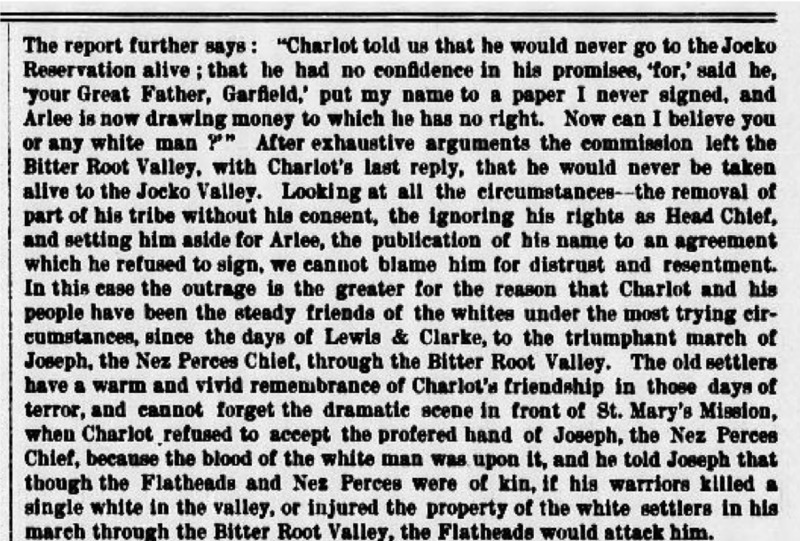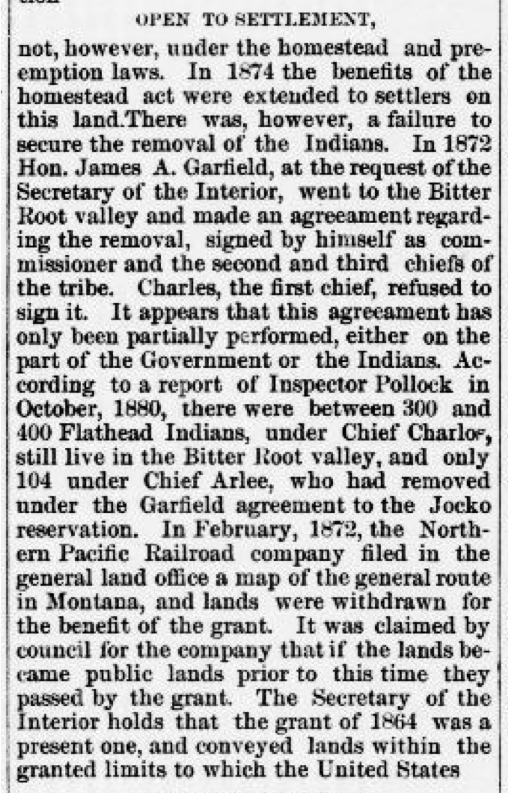Creation of the Flathead Reservation

The Flathead Indian Reservation was created in an attempt to open up Western Montana for American settlers. By the early 20th century, the reservation was completely surrounded by National Forest and the Flathead faced challenges to their hunting rights.
The Flathead Reservation is located in Northwestern Montana, surrounded by the Kootenai, Flathead, and Lolo National Forests. It is home to people from the Kootenai, Bitterroot Salish, and Pend d’Oreilles tribes, often collectively referred to as the Flathead.
The reservation was created in the 1855 Hellgate Treaty. The three tribes ceded 12 million acres of land in Montana and Idaho. 1.2 million acres were reserved for the Flathead in Jocko Valley. The treaty council included a clause that stated the Bitterroot Valley would be surveyed and the President would decide if the land were better suited for use by the Flathead or by American settlers. Likely believing that his people would be allowed to remain in the Bitterroot Valley permanently, the leader of the Bitterroot Salish signed the treaty, which was ratified in 1859.
In 1871, President Grant issued an Executive Order affirming that a survey of the land had been completed and that no land in the Bitterroot Valley needed to be reserved. The following year, the Secretary of the Interior sent James A. Garfield to negotiate the removal of the Bitterroot Salish to the reservation. The Bitterroot leader, Charlot, refused to accept removal. He and other Salish leaders argued that the government had failed to uphold their end of the Hellgate Treaty. Garfield promised that if they moved to the reservation, the government would build 60 homes and increase the reservation’s rations and annuities. Charlot still refused, but his signature was later forged. Charlot told Senator Dawes in 1883, “How can I believe you, or any white man, after the way I have been treated?” Finally, in 1889, Charlot signed an agreement to move, and two years later the Bitterroot Salish were escorted to the reservation.
Facing population loss as settlers moved to Canada, Montana government leaders wanted to open up reservation lands for American settlement. The Flathead refused to cede the land in 1901, but were forced when allotment was applied to their reservation in 1904. White settlement was officially permitted in the reservation beginning in 1910. Charlot’s grandson said, “When they opened the reservation I do not believe the Indians were in favor of it. I was not in favor of it. In the first place, they were not asked about it – it was sort of stolen from them.”
Flathead National Forest was created in 1897, followed by Lolo National Forest in 1906 and Kootenai National Forest in 1907. The Flathead continued to hunt in the areas surrounding their reservation citing rights given them in the Hellgate Treaty. They began to clash with game wardens, and in 1908, a small hunting party of Pend d’Oreilles were killed by a game warden and his deputy in what became known as the Swan Valley Massacre. Completely surrounded by federal lands and consequently unable to hunt outside their reservation, the Flathead grew increasingly dependent on government aid. Today, tribal members living on the Flathead Reservation are outnumbered by residents of other ethnicities.
Images



“Montana Indians.” Butte Daily Miner, January 1, 1888, p. 91. Chronicling America: Historic American Newspapers. Lib. of Congress. https://chroniclingamerica.loc.gov/lccn/sn85053095/1888-01-01/ed-1/seq-91/#date1=1887&index=2&date2=1889&searchType=advanced&language=&sequence=0&lccn=sn85053095&words=Indian+Indians+INDIANS+MONTANA+Montana&proxdistance=5&rows=20&ortext=&proxtext=&phrasetext=&andtext=montana+indians&dateFilterType=yearRange&page=1
